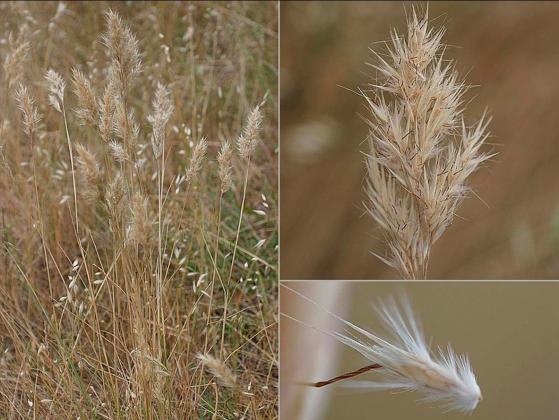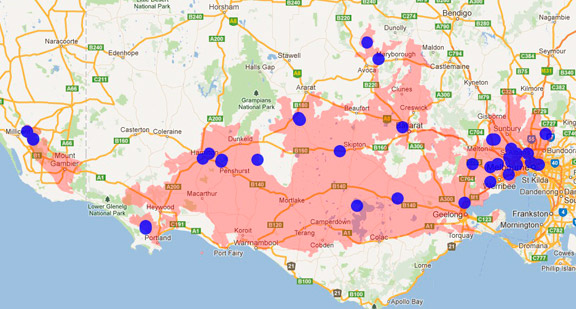A range of teacher professional learning programs will be developed to accompany the Biodiversity of the Western Volcanic Plains online outreach...

Bristly Wallaby-grass
Rytidosperma setaceum
Perennial. Seeds are eaten by native birds. This grass grows mostly in late winter to early summer, following winter rains as temperatures rise, making it a valuable food plant for wildlife and stock. Most wallaby grass species are rapid colonisers of disturbed ground, particularly dry, poor soils. They can survive heavy grazing and drought.
| Details | Description |
| Type | Graminoid |
| Group | Grass |
| Former Scientific Name | Austrodanthonia setacea |
| Identifying Characteristics | |
| Distinctive Features | Short flower heads, becoming fluffy seed heads as they dry out. The central coppery awn (bristle) on each seed extends past the fluffy mass, creating a bristly appearance. The leaves are often quite hairy, making the whole plant appear greyish. |
| Life Form Group | Graminoid |
| Life Form Codes | Medium to Small Tufted Graminoid (MTG) |
| EVC types | EVC 132_61: Heavier-soils Plains Grassland EVC 132_63: Low-rainfall Plains Grassland EVC 55_61: Plains Grassy Woodland EVC 55_63: Higher Rainfall Plains Grassy Woodland EVC 649: Stony Knoll Shrubland EVC 803: Plains Woodland |
| Native Status | Native to Australia |
| Taxonomy | |
| Phylum | Charophyta |
| Class | Equisetopsida |
| Order | Poales |
| Family | Poaceae |
| Genus | Rytidosperma |
| Species | setaceum |

Distribution maps indicate current and historic locations where species have been sighted.
Source: Atlas of Living Australia
| Endangered Status | |
| DEPI Advisory List | Not listed |
| FFG Act | Not listed |
| EPBC Act | Not listed |
The conservation status of species is listed within Victoria and Australia.
The Department of Environment and Primary Industry (DEPI) Advisory List consists of non-statutory advisory lists of rare or threatened flora and fauna within Victoria.
The Flora and Fauna Guarantee Act 1988 (FFG Act) lists threatened species in Victoria. Under the Act, an Action Statement is produced for each listed species.
The Environment Protection and Biodiversity Conservation Act 1999 (EPBC Act) is the Australian Government’s key piece of environmental legislation, listing nationally threatened native species and ecological communities.



